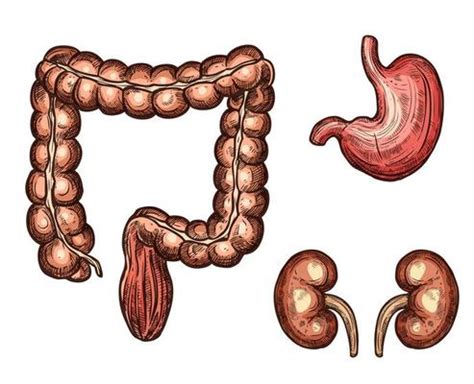Urinary tract infections (UTIs) are a common health concern, particularly among the elderly. As individuals age, changes in the body can make them more susceptible to infections, and UTIs can present differently in older adults than in younger individuals. Recognizing the causes, symptoms, and risk factors of UTIs in the elderly is crucial for timely diagnosis and treatment. Left untreated, UTIs can lead to severe complications, impacting overall health and quality of life. In this article, we will explore the specifics of UTIs in elderly individuals, from causes and symptoms to prevention strategies, ensuring that both caregivers and patients are well-informed.
ujocis.net will take you through an extensive exploration of this topic.
1. Overview of urinary tract infections (UTIs)
Urinary tract infections (UTIs) develop when harmful bacteria invade the urinary system, potentially affecting any part from the urethra to the kidneys. The bladder is the most common site of infection, leading to discomfort and inflammation. While UTIs are prevalent in individuals of all ages, they tend to become more frequent and potentially severe in older adults. This is due to age-related changes in the immune system and urinary tract, making them more susceptible to infection.
Urinary tract infections (UTIs) in the elderly can be difficult to diagnose. This is because they often go undetected or present with unusual symptoms like confusion or sudden weakness. While women are more susceptible to UTIs due to their shorter urethras, men, especially those with prostate problems, can also develop them. Repeated UTIs in older adults can lead to chronic health problems and a decline in quality of life. Therefore, understanding the underlying causes of UTIs is crucial for early identification and treatment. Prompt detection and intervention are vital to prevent serious complications, making UTI awareness essential for managing the health of older individuals.

2. Common causes of UTIs in the elderly
Elderly individuals face an increased risk of urinary tract infections (UTIs) due to several age-related factors. Weakened bladder muscles and a compromised immune system make it easier for bacteria to flourish in the urinary system. Incomplete bladder emptying, common in older adults, also contributes to the problem by allowing bacteria to accumulate within the bladder.
For elderly women, hormonal changes after menopause lead to a thinner and less elastic urinary tract lining, making it more susceptible to infection. In men, prostate enlargement can obstruct urine flow, increasing the risk of UTIs. Additionally, the use of catheters, common in elderly patients with mobility or incontinence issues, can introduce bacteria into the urinary tract.
Older adults with chronic conditions, such as diabetes or kidney disease, are more prone to UTIs. Additionally, limited mobility or cognitive impairment can hinder early detection of symptoms, potentially leading to more severe infections. Recognizing these contributing factors is essential for effectively preventing recurrent or severe UTIs in the elderly.

3. Symptoms specific to UTIs in elderly individuals
Urinary tract infections (UTIs) in the elderly may manifest differently than in younger populations. While classic symptoms like pain during urination, increased urinary frequency, and cloudy or foul-smelling urine can still arise, older adults are more prone to experiencing less obvious or general signs of infection.
A sudden onset of confusion or delirium is a frequent and worrying symptom in the elderly, often misidentified as age-related cognitive decline. This mental change, accompanied by heightened agitation or irritability, can be an early warning sign of an infection. Other symptoms may include unexplained fatigue, weakness, or a general feeling of unwellness, which can be mistaken for other age-related health problems.
While abdominal pain, fever, or chills may occur in some cases, these symptoms are not consistently present in elderly individuals with UTIs. The absence of typical signs like pain or discomfort can delay diagnosis and treatment. Recognizing these less common symptoms is essential, as untreated UTIs in the elderly can rapidly progress to serious complications like kidney infections or sepsis.

4. Risk factors for UTIs in older adults
Older adults are particularly vulnerable to urinary tract infections (UTIs) due to a number of risk factors. One significant factor is age-related changes in bladder function, often resulting in incomplete bladder emptying. This creates an ideal breeding ground for bacteria. Conditions like incontinence or the use of urinary catheters further exacerbate the risk, as these can introduce bacteria directly into the urinary tract.
Hormonal changes in postmenopausal women, particularly the decrease in estrogen, weaken the urinary tract’s natural defenses, making infections more likely. In men, an enlarged prostate can obstruct the flow of urine, leading to stagnant urine and bacterial growth.
Chronic health conditions, such as diabetes, significantly impact UTI risk. High blood sugar levels weaken the immune system and create a hospitable environment for bacteria. Furthermore, limited mobility, cognitive decline, and dehydration pose additional challenges for UTI prevention and treatment in older adults. These factors can complicate efforts to manage and prevent UTIs. Recognizing and addressing these risk factors is crucial to minimizing the frequency and severity of UTIs in the elderly.
5. Diagnosis and testing for UTIs in the elderly
Diagnosing UTIs in the elderly demands meticulous assessment, as symptoms can frequently be unconventional or understated. Healthcare professionals usually commence with an evaluation of symptoms and a physical examination. However, given that confusion and general frailty may be the sole signs of a UTI in older individuals, testing becomes indispensable for an accurate diagnosis.
A urinalysis, the most frequent diagnostic test, examines urine for bacteria, white blood cells, or other indicators of infection. If an infection is suspected, a urine culture may be conducted to isolate the specific bacteria responsible. This helps determine the most appropriate antibiotic treatment.
If you experience recurrent UTIs, your doctor may recommend additional tests, such as an ultrasound or CT scan, to rule out structural abnormalities in your urinary tract. Early diagnosis is crucial for the elderly, as untreated UTIs can rapidly progress to serious complications like kidney infections or sepsis. Regular monitoring and prompt testing are vital to ensure timely and effective treatment.
6. Treatment options for UTIs in elderly patients
Treating urinary tract infections (UTIs) in older adults usually involves a combination of antibiotics and supportive care. After a UTI diagnosis, healthcare providers prescribe antibiotics based on the type of bacteria identified in a urine sample. Common antibiotics for UTIs include trimethoprim-sulfamethoxazole, nitrofurantoin, or ciprofloxacin. However, for recurrent UTIs or antibiotic resistance, a more personalized treatment plan may be required, using culture results to determine the most effective medication.
Close monitoring of elderly patients during treatment is crucial. They may have compromised immune systems or pre-existing conditions that can hinder recovery. Adequate hydration is vital, as it helps eliminate bacteria from the urinary tract and prevents dehydration, which can exacerbate symptoms. Pain relievers or fever-reducing medications may be prescribed for symptom control.
For individuals experiencing recurrent urinary tract infections (UTIs), long-term low-dose antibiotics or preventive measures like probiotics or estrogen therapy (for postmenopausal women) may be recommended. In more severe cases, hospitalization and intravenous antibiotics might be necessary, especially if the infection has spread to the kidneys or bloodstream. Prompt and appropriate treatment is vital to prevent complications and facilitate a complete recovery.
7. Prevention strategies for UTIs in older adults
Preventing urinary tract infections (UTIs) in older adults requires a proactive approach to reduce infection risk. Staying well-hydrated is crucial, as ample fluid intake helps flush bacteria from the urinary tract and prevents dehydration, which can worsen symptoms. Encouraging frequent urination and discouraging holding urine for extended periods also helps minimize bacterial growth.
Elderly individuals who use catheters should practice meticulous hygiene and follow a schedule for catheter changes to minimize the risk of infection. Incontinence care must include frequent changes of protective garments and maintaining clean and dry skin.
Postmenopausal women may benefit from estrogen therapy, which can help restore the natural defenses of the urinary tract. Furthermore, incorporating probiotics into the diet can support urinary tract health by promoting beneficial bacteria and preventing the growth of harmful microorganisms.
Effective management of chronic conditions, such as diabetes, is vital. Uncontrolled blood sugar levels heighten the risk of infection. Furthermore, regular medical check-ups and timely treatment of any signs of infection are crucial in preventing recurrent urinary tract infections (UTIs). Caregivers must be educated to recognize early symptoms of infection and ensure consistent implementation of preventive measures. This approach enhances overall health and well-being, particularly for older adults.
8. Impact of UTIs on overall health in the elderly
Urinary tract infections (UTIs) can have a profound impact on the overall health of elderly individuals, potentially leading to serious complications if left untreated. While UTIs are often associated with discomfort and symptoms such as pain, frequent urination, and fever, they can also trigger a cascade of broader health issues in older adults. Of particular concern is the potential for cognitive decline, where UTIs may cause sudden confusion or delirium. This can be easily mistaken for age-related changes, but it often signals a more serious problem that requires prompt medical attention.
Infections spreading to the kidneys or bloodstream can escalate into serious conditions like pyelonephritis or sepsis. These complications demand intensive medical intervention and pose a significant risk to life. The increased likelihood of hospitalization and extended recovery periods can further compromise an elderly person’s overall well-being, leading to reduced mobility and independence.
Recurring or persistent urinary tract infections (UTIs) can negatively impact quality of life, affecting both mental well-being and daily activities. Effective management and prevention strategies are essential for preserving overall health and avoiding these detrimental consequences. Early detection and consistent care are crucial for addressing and managing UTIs effectively.
9. Potential complications from untreated UTIs
Untreated urinary tract infections (UTIs) in the elderly can have serious consequences for their overall health. One such complication is pyelonephritis, an infection of the kidneys that can cause severe pain and fever. If left untreated, pyelonephritis can lead to kidney damage. Furthermore, it can progress to systemic infection or sepsis, a life-threatening condition where the infection spreads throughout the body, potentially causing organ failure. Sepsis requires immediate medical intervention.
Furthermore, untreated UTIs can worsen existing health problems like diabetes or heart disease, as they weaken the immune system. Chronic or recurring UTIs can cause persistent discomfort and increase the likelihood of hospitalization, which can have a detrimental impact on the overall well-being and independence of elderly individuals.
Untreated urinary tract infections (UTIs) can lead to serious cognitive changes, including delirium or worsening dementia, especially in older adults with pre-existing cognitive issues. Prompt and effective treatment is crucial to prevent these complications and maintain the health and well-being of individuals.
10. Importance of caregiver awareness and support
Managing urinary tract infections (UTIs) in elderly individuals hinges on caregiver awareness and support. Caregivers are instrumental in identifying symptoms, facilitating prompt treatment, and implementing preventative strategies. Since UTIs in the elderly can manifest with atypical symptoms like confusion or sudden weakness, caregivers must be vigilant and well-informed about these signs to enable early medical intervention.
Caregivers play a crucial role in preventing UTIs by understanding the importance of proper hygiene, particularly with incontinence and catheter use. Encouraging regular hydration and frequent urination is essential for reducing the risk of infection. By being knowledgeable about the specific risk factors and symptoms of UTIs, caregivers can proactively take preventative measures and promptly seek medical attention if an infection is suspected.
Caregivers can also play a crucial role in supporting the elderly by assisting in managing chronic conditions, such as diabetes, which can increase the risk of UTIs. Additionally, caregivers should ensure that elderly individuals receive regular medical check-ups and follow-up appointments to monitor their urinary health.
By staying informed and attentive, caregivers can significantly reduce the risk of UTIs, improve the quality of life for elderly individuals, and prevent potential complications, ultimately contributing to better overall health and well-being.
In summary, understanding and addressing urinary tract infections (UTIs) in the elderly is vital for maintaining their health and quality of life. Recognizing the unique symptoms, risk factors, and potential complications of UTIs helps in early diagnosis and effective treatment. Preventive measures and caregiver support are crucial in managing these infections and avoiding serious outcomes. By staying informed and proactive, caregivers can significantly enhance the well-being of elderly individuals and safeguard their overall health.
ujocis.net

